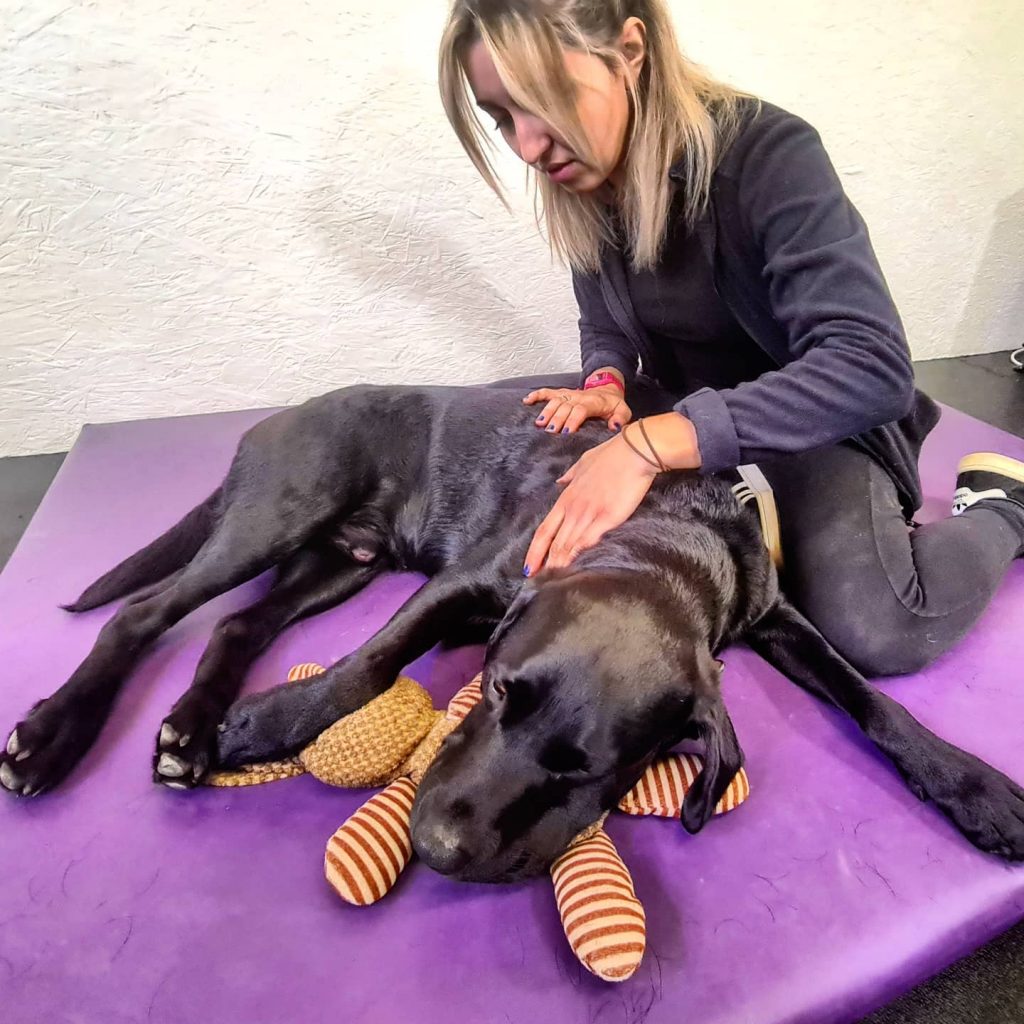The Gold Standard in Physiotherapy and Hydrotherapy for dogs
The Gold Standard in Physiotherapy and Hydrotherapy for dogs

Elbow dysplasia is a catch-all term that means there is an abnormal development of the elbow joint. It inevitably leads to the development of arthritis. Either the elbow dysplasia or the secondary arthritis may cause elbow pain.
Elbow dysplasia is a genetic disorder. An uneven fit of the three bones in the elbow is suspected and this results in abnormal distribution of weight within the joint. Points of increased pressure cause damage to the cartilage covering the bones, and fragmentation of cartilage and the underlying bone may develop.
Elbow dysplasia is a common condition, especially in large breed dogs.
Affected dogs may show signs of:
Examination may reveal muscle wastage, especially over the hips. Manipulation of the joints may cause increased pain and instability may be palpable. Swelling and restriction in the range of motion may also be evident.
X-rays are necessary to diagnose elbow dysplasia. They enable the severity of the abnormal joint development and presence of secondary osteoarthritis to be assessed.
A CT scan is a form of X-ray that produces thin slices through the joint in any plane. These images can be reformatted to give a 3-D model of the joint. CT gives excellent detail of the shape (congruency) of the joint and enables detection of small bony fragments. Damage to the surface of the joint can be assessed by placing a small camera in the joint – this is called arthroscopic examination. It provides more detail of the joint surfaces than radiographs or a CT scan.
Some dogs with elbow dysplasia can be managed satisfactorily without the need for surgery. Exercise often needs to be controlled to some degree. Each dog will have its own threshold of duration and type of activity beyond which elbow pain may increase. Hydrotherapy is often beneficial. Dogs that are overweight benefit from being placed on a diet.
Dogs with elbow dysplasia that fail to respond satisfactorily to conservative treatment may need surgery. There are three key types of surgery:
The outlook or prognosis with elbow dysplasia and the associated osteochondrosis/osteoarthritis is quite variable. Some dogs can be managed successfully with conservative treatment involving modification of exercise and weight, with or without the need for anti-inflammatory painkiller drugs. Others benefit from removal of cartilage and bone fragments or surgery to improve joint congruency. The majority of dogs lead satisfactory lives, although their exercise and weight may need to be closely monitored. A degree of stiffness and lameness, especially after exercise, is not uncommon.
Rehabilitation is a process which aims to maximise patient mobility and wellbeing, returning them to their usual way of life following illness, injury or surgery. We restore pets to normal function (or as close as is possible), efficiently and safely using a wide variety of physiotherapeutic techniques.
Injury and even surgery can disrupt the body’s equilibrium in all sorts of direct and indirect ways. Even a pet’s own protective responses such as the inflammatory process can overwhelm and inhibit healing so one objective of rehabilitation is to reduce this level of inflammation. During rehabilitation, we also aim to boost the circulatory system, improve muscle function, increase range of motion within joints, and stimulate innate pain-relieving mechanisms.
With a committed and planned rehabilitation programme, pets can recover more quickly, realise better outcomes and avoid much pain and discomfort.
The best rehabilitation programmes consider the whole pet, not just the area of injury; we target and improve multiple systems throughout the body without forgetting the invaluable healing effects of boosting mental wellbeing too. From the wound healing properties of laser treatment, and the muscle strengthening of hydrotherapy, to the circulation boosting effects of massage, we will devise a rehabilitation programme to match a pet’s specific requirements.
Our friendly and skilled physiotherapists are ready to help you and your dog with their rehabilitation.
The content on this page is for advice and information only and does not represent veterinary guidance or direction. Please always consult a veterinary surgeon if you are worries about your dog.